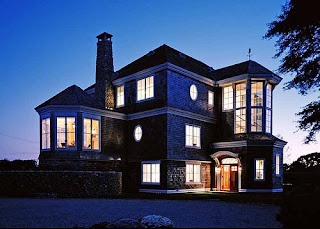I am the IT Manager at Crittall Windows Ltd, the UK's largest supplier of steel windows and doors.
Although my job title is IT Manager, I have a responsibility as a manager of the business, as well as in my own particular specialization. This means that I need to understand the markets in which the company operates, and the products and services that the company provides to meet the demands of those markets.
This blog will be drawn from my experience within Crittall Windows, and, of course, many of the examples I provide will be based on Crittall products and services. However, I will, wherever possible, give information from and about other suppliers to the market.
Without realising it, I became a supporter of the steel window quite early in life. As a teenager, I was brought up in a town in the North West of England. We lived in a row of imposing Victorian semi-detached houses. At the end of the row was a typical 1930s modernist house with flat roof, white rendered walls, curved corners, and curved steel windows. It had always been a talking point, and, for some reason, I liked the fact that it was there.
Eventually, of course, I moved away. I went to university, then worked in London. On one of my visits home, I was absolutely horrified to see that someone had, in my view, desecrated the house. The white render had been pebble-dashed, the flat roof was now a pitched roof, and the steel windows had been replaced with PVCu. The beautiful curved windows were now faceted with vast expanses of white plastic. The whole effect was to destroy the original design.
Although my job title is IT Manager, I have a responsibility as a manager of the business, as well as in my own particular specialization. This means that I need to understand the markets in which the company operates, and the products and services that the company provides to meet the demands of those markets.
This blog will be drawn from my experience within Crittall Windows, and, of course, many of the examples I provide will be based on Crittall products and services. However, I will, wherever possible, give information from and about other suppliers to the market.
Without realising it, I became a supporter of the steel window quite early in life. As a teenager, I was brought up in a town in the North West of England. We lived in a row of imposing Victorian semi-detached houses. At the end of the row was a typical 1930s modernist house with flat roof, white rendered walls, curved corners, and curved steel windows. It had always been a talking point, and, for some reason, I liked the fact that it was there.
Eventually, of course, I moved away. I went to university, then worked in London. On one of my visits home, I was absolutely horrified to see that someone had, in my view, desecrated the house. The white render had been pebble-dashed, the flat roof was now a pitched roof, and the steel windows had been replaced with PVCu. The beautiful curved windows were now faceted with vast expanses of white plastic. The whole effect was to destroy the original design.

It's clear that some designs just don't "work" without the slim profiles of steel windows, and shapes that can be created. This is as true of some modern buildings, as it is of older ones.
 A little later, it was brought home to me again, when I visited a friend who was renting a large detached 1920s Arts and Crafts-style house in West Sussex. As it was a rental property, it had not been updated by the owner, and still had the original single-glazed, standard metal windows. Next door was identical in design and layout, but was privately owned and had the original windows replaced by PVCu.
A little later, it was brought home to me again, when I visited a friend who was renting a large detached 1920s Arts and Crafts-style house in West Sussex. As it was a rental property, it had not been updated by the owner, and still had the original single-glazed, standard metal windows. Next door was identical in design and layout, but was privately owned and had the original windows replaced by PVCu.The contrast between the 2 houses, from the outside, was striking. The unadulterated house looked so much better, the PVCu windows seemed to completely dominate the whole elevation, whereas, the steel windows blended in to the building.
Today, it is possible to replace original, single-glazed steel windows with a double-glazed replica with improved performance, which will maintain the integrity of the original design.
Today, it is possible to replace original, single-glazed steel windows with a double-glazed replica with improved performance, which will maintain the integrity of the original design.
